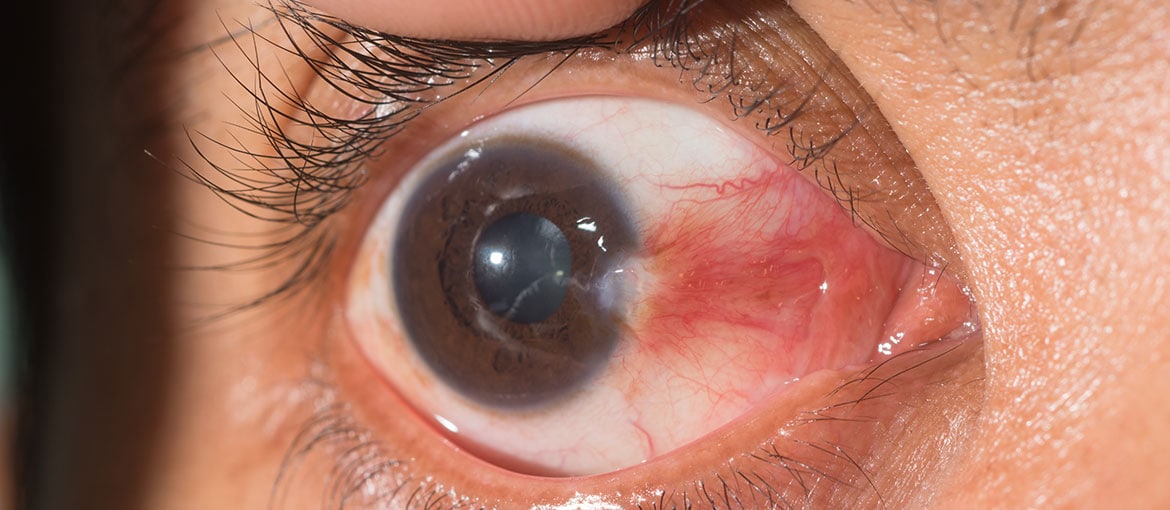

A pterygium (pronounced ter-idge-ee-um, plural: pterygia) is a triangular-shaped lump of tissue with blood vessels that grows from the conjunctiva (the thin membrane that covers the white of the eye) on to the cornea (the clear central part of the eye). Pterygia frequently occur in both eyes, usually on the side of the eye closer to the nose. A pterygium is not a cancer. People sometimes confuse pterygia with cataracts.
The development of pterygia is strongly associated with exposure to ultraviolet radiation and hot, dry environments.
Pterygia are not dangerous, but they can be a problem cosmetically and can cause irritation and redness. Pterygia may also interfere with vision as their growth can cause corneal distortion. If the pterygium grows on to the central part of the cornea it can begin to block light from entering the eye. Although a pterygium is not dangerous, it should be checked to make sure that it is not something more serious.
In cases where a pterygium is actively growing on to the cornea and threatening to distort the vision, the only effective treatment is surgical removal. This surgery is usually performed under a local anaesthetic. It is best to have surgery before the pterygium progresses to the point where it interferes with vision. At Masons Eyecare we will assess the pterygium and refer you to an eye surgeon if the pterygium requires removal.
The best way to reduce your risk of developing a pterygium, or to slow the progression of an existing pterygium, is to protect your eyes from ultraviolet light. UV radiation can also cause cataracts and other eye diseases, as well as skin cancers, so reducing exposure is a wise move.
Your eyes are your window to the world, and the Masons Eyecare team is here to protect the eye health of the whole family. Contact us today or visit our optometrist in Kempsey.









